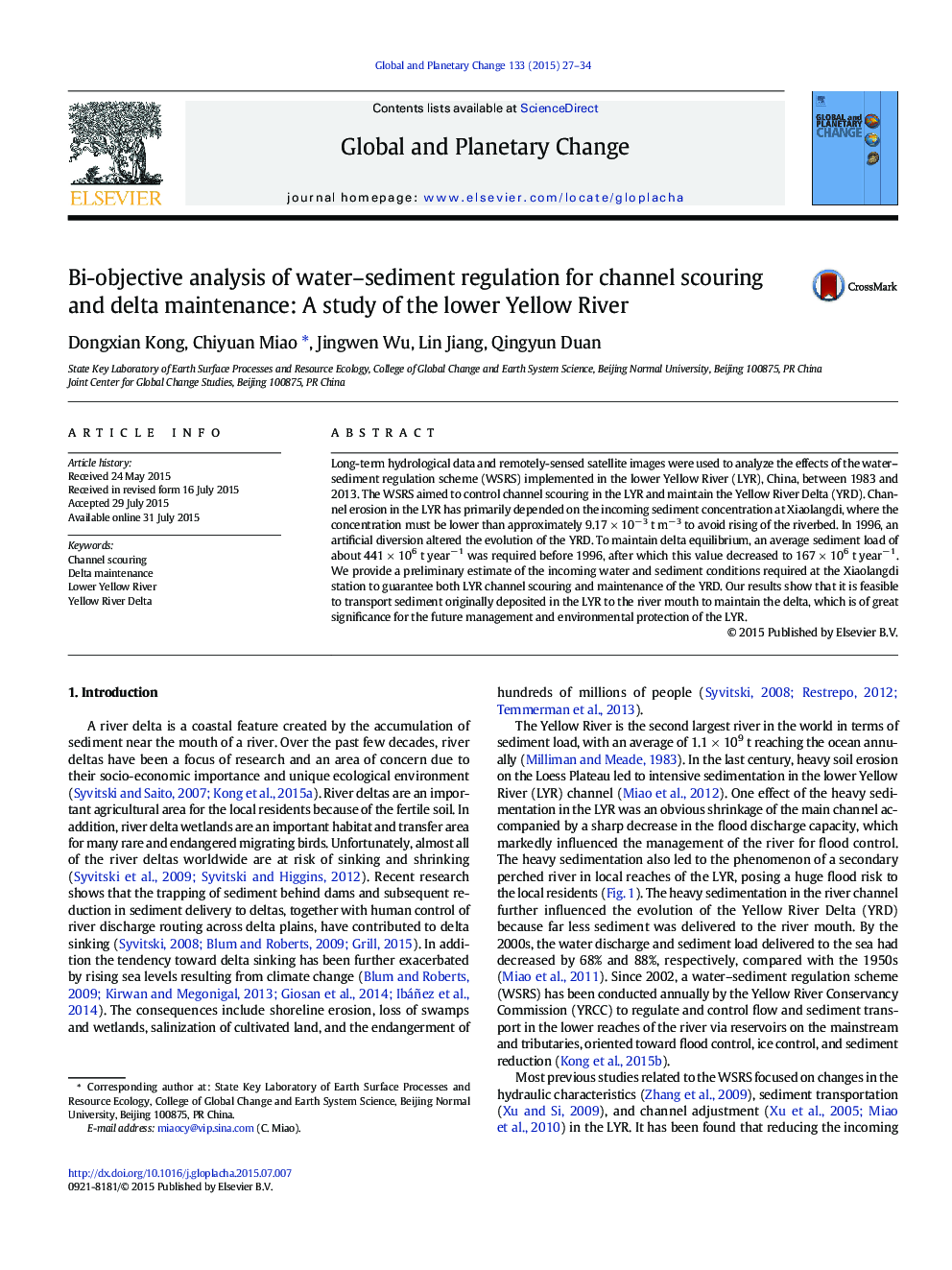| Article ID | Journal | Published Year | Pages | File Type |
|---|---|---|---|---|
| 6348040 | Global and Planetary Change | 2015 | 8 Pages |
Abstract
Long-term hydrological data and remotely-sensed satellite images were used to analyze the effects of the water-sediment regulation scheme (WSRS) implemented in the lower Yellow River (LYR), China, between 1983 and 2013. The WSRS aimed to control channel scouring in the LYR and maintain the Yellow River Delta (YRD). Channel erosion in the LYR has primarily depended on the incoming sediment concentration at Xiaolangdi, where the concentration must be lower than approximately 9.17 Ã 10â 3 t mâ 3 to avoid rising of the riverbed. In 1996, an artificial diversion altered the evolution of the YRD. To maintain delta equilibrium, an average sediment load of about 441 Ã 106 t yearâ 1 was required before 1996, after which this value decreased to 167 Ã 106 t yearâ 1. We provide a preliminary estimate of the incoming water and sediment conditions required at the Xiaolangdi station to guarantee both LYR channel scouring and maintenance of the YRD. Our results show that it is feasible to transport sediment originally deposited in the LYR to the river mouth to maintain the delta, which is of great significance for the future management and environmental protection of the LYR.
Keywords
Related Topics
Physical Sciences and Engineering
Earth and Planetary Sciences
Earth-Surface Processes
Authors
Dongxian Kong, Chiyuan Miao, Jingwen Wu, Lin Jiang, Qingyun Duan,
